- News
- Reviews
- Bikes
- Accessories
- Accessories - misc
- Computer mounts
- Bags
- Bar ends
- Bike bags & cases
- Bottle cages
- Bottles
- Cameras
- Car racks
- Child seats
- Computers
- Glasses
- GPS units
- Helmets
- Lights - front
- Lights - rear
- Lights - sets
- Locks
- Mirrors
- Mudguards
- Racks
- Pumps & CO2 inflators
- Puncture kits
- Reflectives
- Smart watches
- Stands and racks
- Trailers
- Clothing
- Components
- Bar tape & grips
- Bottom brackets
- Brake & gear cables
- Brake & STI levers
- Brake pads & spares
- Brakes
- Cassettes & freewheels
- Chains
- Chainsets & chainrings
- Derailleurs - front
- Derailleurs - rear
- Forks
- Gear levers & shifters
- Groupsets
- Handlebars & extensions
- Headsets
- Hubs
- Inner tubes
- Pedals
- Quick releases & skewers
- Saddles
- Seatposts
- Stems
- Wheels
- Tyres
- Health, fitness and nutrition
- Tools and workshop
- Miscellaneous
- Cross country mountain bikes
- Tubeless valves
- Buyers Guides
- Features
- Forum
- Recommends
- Podcast
feature
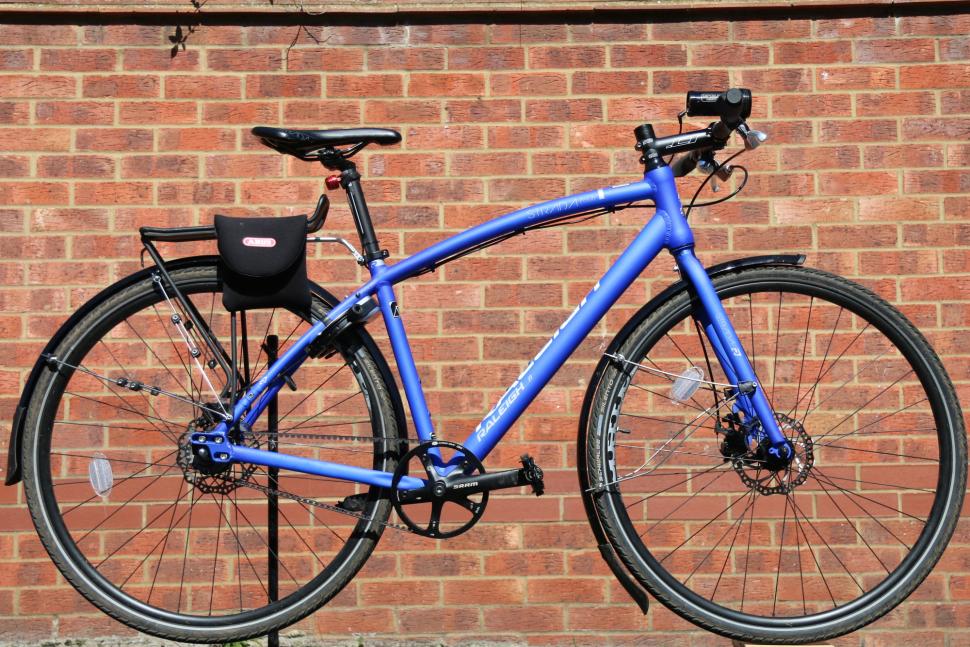 Project practical 12.JPG
Project practical 12.JPGProject Practical: How to build a fuss-free everyday bike
Sleek, high-tech bikes are all very well, but what if you want a bike that doesn't require special clothes and clickety-clackety shoes? I set out to make a practical bike that used the best of modern technology.
I was chatting with bike company media manager Chris Garrison at a bike show and the topic rambled round to how inconvenient us bike geeks make cycling. She’d had a revelation while riding an electric bike that was kicking around her office and loving the sheer ease with which you could hop on it and do stuff. In my case it had been borrowing my step-daughter’s B’Twin Hoprider 520 hybrid (£320) for nipping to the shops.
Both the bikes we’d been riding came with all the trimmings: rack, mudguards, lights, chainguard, a built-in lock and even a kickstand. That means riding them is as simple as getting them off the rack and setting off. No looking for shoes, no swapping lights from another bike, no worrying about getting soaked from road spray if it rains, no need for special trousers, no need even to lug around a D-lock if you’re just stopping at the shops for a few minutes. The B’Twin even has a basket (not a stock item but dirt cheap to add) so small shopping trips don’t need panniers.
This, it turns out, is brilliantly liberating. Step-daughter rides her B’Twin to school every day. She just pops her backpack in the basket and away she goes.
I had to have something as simple and practical. Project Practical was born.
The advantages of belt drive
The starting point was a Raleigh hybrid I had kicking around because it had been discontinued before I had a chance to review it and I hadn’t got round to sending it back because I’m a slackarse.
What made this bike perfect for Project Practical was its combination of a Gates belt drive and SRAM Automatix two-speed hub.
The Gates Carbon Drive, to give it its full name, is a toothed belt that runs between wide sprockets in place of the usual chainring and rear sprocket. It’s clean and silent, needs no oil and doesn’t have spiky bits that’ll eat your trousers, so you don’t need a chainguard. It needs a hub gear if you’re not going to run a singlespeed, but you can get sprockets to fit just about any hub gear you can think of. It’s brilliantly simple.
You might be wondering why you don’t see Gates belt drive bikes more often. The belt and sprockets are expensive, and the frame needs a separable seat stay so you can change the belt when it wears out. As Raleigh product manager Terry Blackwood puts it, “I want to make a bike like this as a £300 three-speed, but by the time you’ve put on the belt you end up with a £600 bike.”
This is a pity because in use the belt drive is indistinguishable from a chain, except for the lack of greasy marks on your jeans and frayed right-hand cuff.
Raleigh still makes a chain-driven version of this bike, the Strada 4, which can be found for as little as £440. If you fancy a belt-drive bike and need an 18in frame, there are a few of the belt-drive version still in retailers for £450.
Two-speed self-shifting
The Automatix hub is similarly convenient. It’s a two-speed epicyclic gear with a centrifugal clutch to do the shifting. You get to about 10mph and it shifts up for you, which means no thinking about gears and no shifter to clutter up the handlebars.
In many places that wouldn’t be very practical, but it’s fine here in Cambridge where all you really need is a getting-started gear and a cruising gear. It’s only downside is that, for me, it shifts up at a bit too low a speed. It’s possible to modify this, but it involves taking the hub apart and bending an internal spring so I’ve not yet been brave enough.
Aside from that, though, the Raleigh is a typical striped-down British hybrid. I’m told by various bike industry contacts that attempts to sell fully-equipped bikes in the UK fall flat. Even when it’s a bike for simply getting around, people don’t want to pay the extra for mudguards, a rack and so on.
This is, I submit, utterly bonkers.
If a bike comes with a rack and mudguards, the extra cost will be less than adding them later and your arse will be dry from day one. Taking at face value the claim that people don’t buy full-fat bikes, you have to wonder what kind of delusion of everlasting sunshine these people are living under. This is Britain, ferchissakes. It rains a lot.
Evans Cycles has a big range of hybrids compared to most online retailers. Counting bikes at Evans’ website, only about a fifth of hybrids have mudguards. So there you go; 80 percent of Brits are delusional about the weather.
I don’t like a wet arse, so I set about turning my Raleigh into the ideal round-town bike.
Building Project Practical, part I
Equipped with a determination to have a get-on-and-ride bike, I gathered the first set of parts necessary to turn a bare bike into something useful for everyday riding: mudguards, rack, lock and lights.
First, mudguards. There are a lot of options out there, but if you want to stay as dry as possible, SKS Longboard guards (£23.99) provide maximum coverage. The front guard almost touches the ground, so your feet stay dry, and the rear keeps spray off anyone behind you.
The Raleigh has disc brakes, so its mudguard eyes are in unusual places. That meant some careful bending of the front stays to get them into the clamp bolts, but the rear stays just weren’t long enough. Fortunately I had a Bontrager NCS mudguard kicking around with adjustable stays. A few minutes’ work with a Dremel cutting disc and I had a stay that was long enough for the job.
A practical bike needs carrying capacity, so on went a rack. Another niggle: the rack eyelets on the frame were oddly positioned so I grabbed a seat clamp with built-in threaded holes to put them in a more sensible place.
Going Dutch
One of the things I liked most about my step-daughter’s bike was not having to lug round a lock because it has one mounted on the frame. Variously called a Dutch lock, frame lock, wheel lock or nurse’s lock, this is a horseshoe-shaped contraption that mounts on the seatstays. Some frames have threaded mounts for a Dutch lock, but they’ll fit standard frames too.
Axa and Abus are the big names in Dutch locks. My step-daughter's bike has an Axa Defender (£17) so for variety I went for an Abus Amparo (£27.47) on the Raleigh. Both offer the option of a key that stays with the lock when it’s open so you don’t even need to find your keys when you’re nipping to the shop.
A Dutch lock isn’t as secure as a top quality D-lock but it’ll stop a casual thief from riding away on your bike. If you want more security, you can get add-on chains and cables that slot into the lock so it can be attached to a fixed object. The Abus Amparo chain (£18.22) comes in a pouch that hangs on your rack.
Blinded by the light
That leaves lights. Trying to keep the cost of the changes under control I slapped on an old Exposure Maxx-D I had kicking around, with a Red Eye cable rear light (£27.99) that runs off it. (My Maxx-D's a Mk 4 or thereabouts — the much brighter and cleverer Mk 8 is £269). I know, not cheap if you’re buying from scratch, but the Exposure system has the big advantage that you only have to remember to charge one thing. Nevertheless, the Maxx-D is overkill for the road. If I were buying new, I’d get an Exposure Strada (£202.46) for its road-specific beam.
Exposure isn’t the only system that will run both front and rear lights from one battery. Magicshine offers a set of its MJ-858 front light, 4.4Ahr battery, MJ-818 rear light, cabling and charger for £84.95. A separate battery isn’t as elegant as an Exposure set-up, but you can hardly gripe for the price.
If staggering rear visibility is the most important thing to you, then you can run a Hope District Plus rear light (£59.99) with Hope’s R2 Epic front light and four-cell battery (£179.99).
And there Project Practical rests for the moment. I have a few ideas for tweaks, improvements and extra features that I'll come back to in a future part two. Meantime, feel free to share your favourite practical bike ideas in the comments.
John has been writing about bikes and cycling for over 30 years since discovering that people were mug enough to pay him for it rather than expecting him to do an honest day's work.
He was heavily involved in the mountain bike boom of the late 1980s as a racer, team manager and race promoter, and that led to writing for Mountain Biking UK magazine shortly after its inception. He got the gig by phoning up the editor and telling him the magazine was rubbish and he could do better. Rather than telling him to get lost, MBUK editor Tym Manley called John’s bluff and the rest is history.
Since then he has worked on MTB Pro magazine and was editor of Maximum Mountain Bike and Australian Mountain Bike magazines, before switching to the web in 2000 to work for CyclingNews.com. Along with road.cc founder Tony Farrelly, John was on the launch team for BikeRadar.com and subsequently became editor in chief of Future Publishing’s group of cycling magazines and websites, including Cycling Plus, MBUK, What Mountain Bike and Procycling.
John has also written for Cyclist magazine, edited the BikeMagic website and was founding editor of TotalWomensCycling.com before handing over to someone far more representative of the site's main audience.
He joined road.cc in 2013. He lives in Cambridge where the lack of hills is more than made up for by the headwinds.
Latest Comments
- ubercurmudgeon 43 min 9 sec ago
I had three different cyclocross bikes before the marketing departments at various bicycle companies came up with the "gravel" category. All of...
- Sredlums 1 hour 27 min ago
Maybe the UK could try to reach some sort of agreement with the EU over things like international trade and such.
- David9694 1 hour 57 min ago
Cumbria County Council was a 1974 creation, merging the of old County Borough of Carlisle, and counties of Cumberland, and Westmorland - in which...
- Backladder 2 hours 8 min ago
If BC want to insist on barriers then they should have their own stock loaded on a truck that they can rent out to organisers at reasonable cost,...
- Miller 2 hours 38 min ago
Well, there's lifetime bans and there's lifetime bans. Banning an 88 year old don't impress me much.
- Gkam84 5 hours 44 min ago
I think that is why blind eyes have been turned in the UK, internationally aswell, with things like the Redhook crits, there were many licensed...
- mdavidford 6 hours 53 min ago
Ahem - other esporters(?) might be rather surprised to hear that the UCI has taken over their events - I think that would be the Cycling Esports...
- Bungle_52 7 hours 2 min ago
I wonder how he got to the game?
- OldRidgeback 7 hours 4 min ago
You'd need some good wet weather gear for that ride too.
- OnYerBike 9 hours 28 min ago
It seems to me that the most likely explanation is that whoever provided that quote fails to grasp the difference between a "public right of way"...

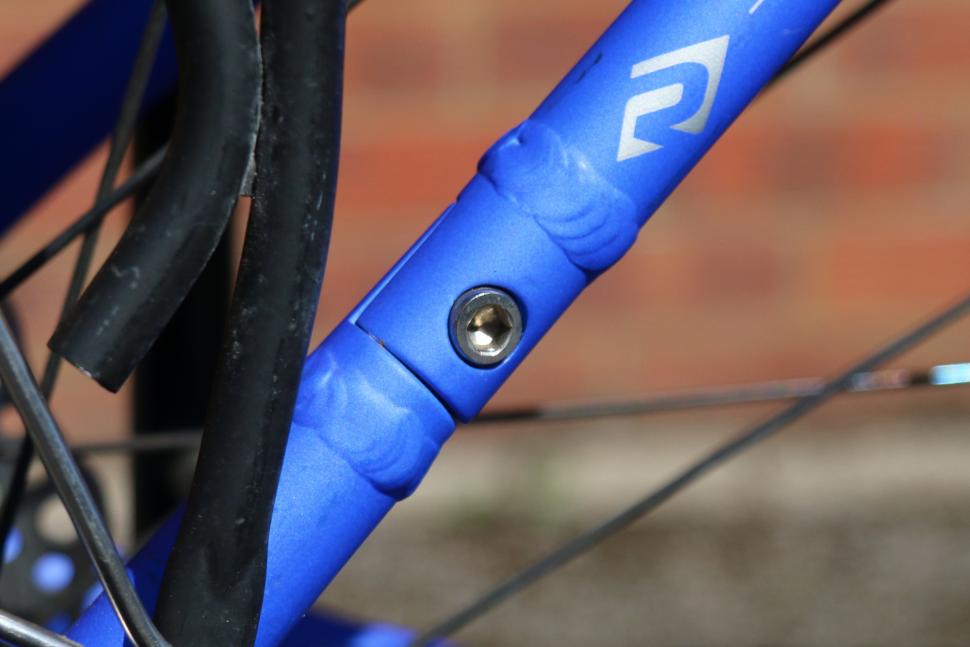
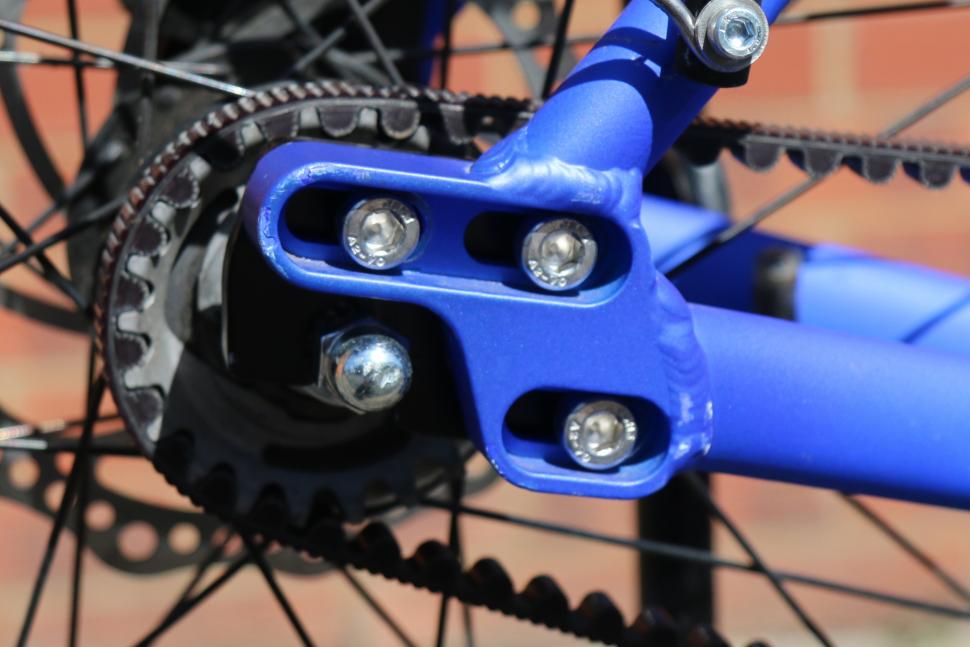
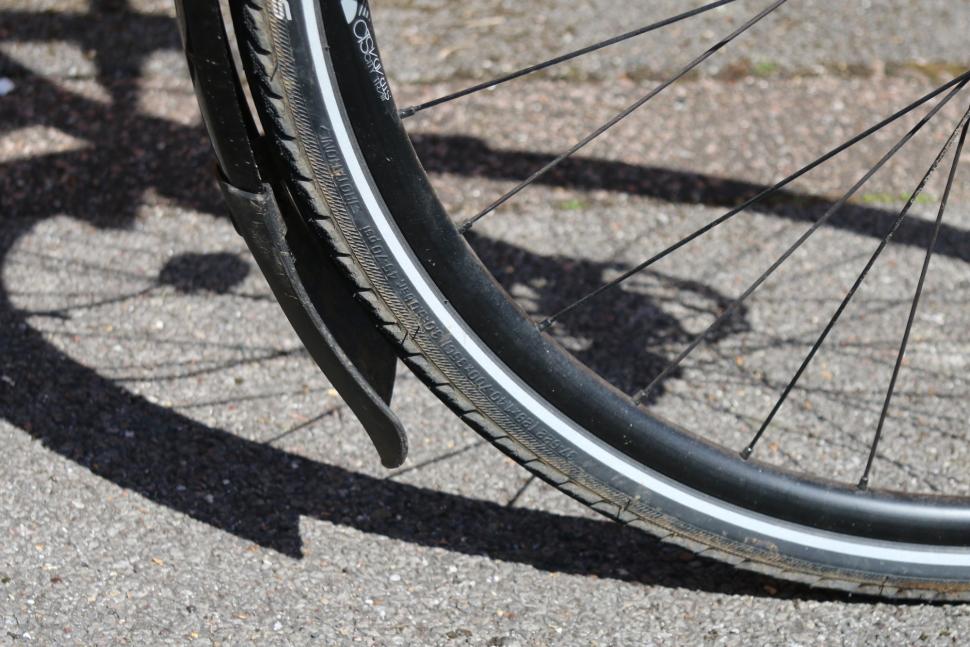
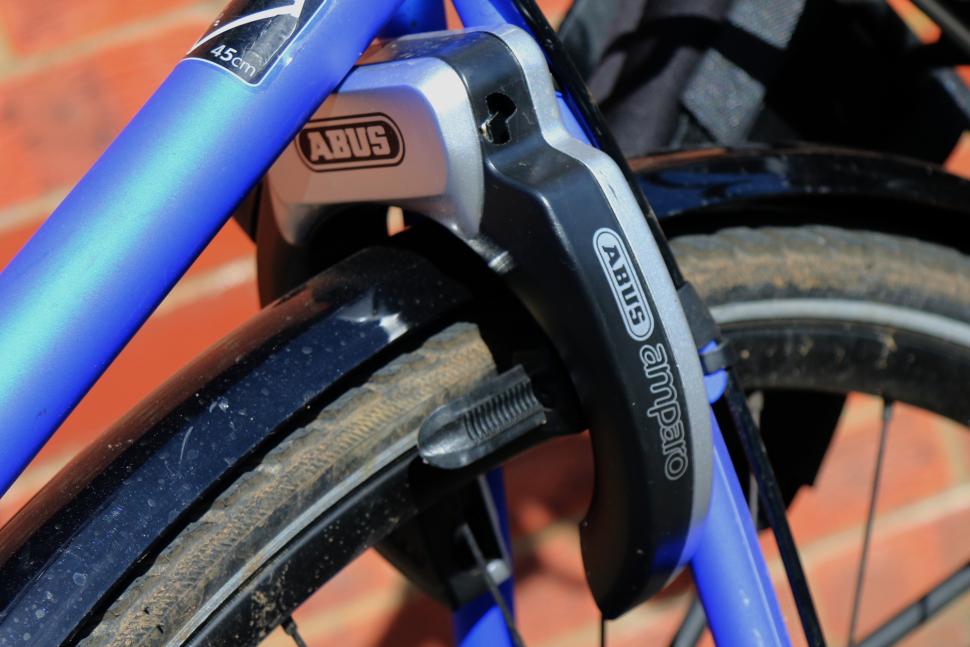
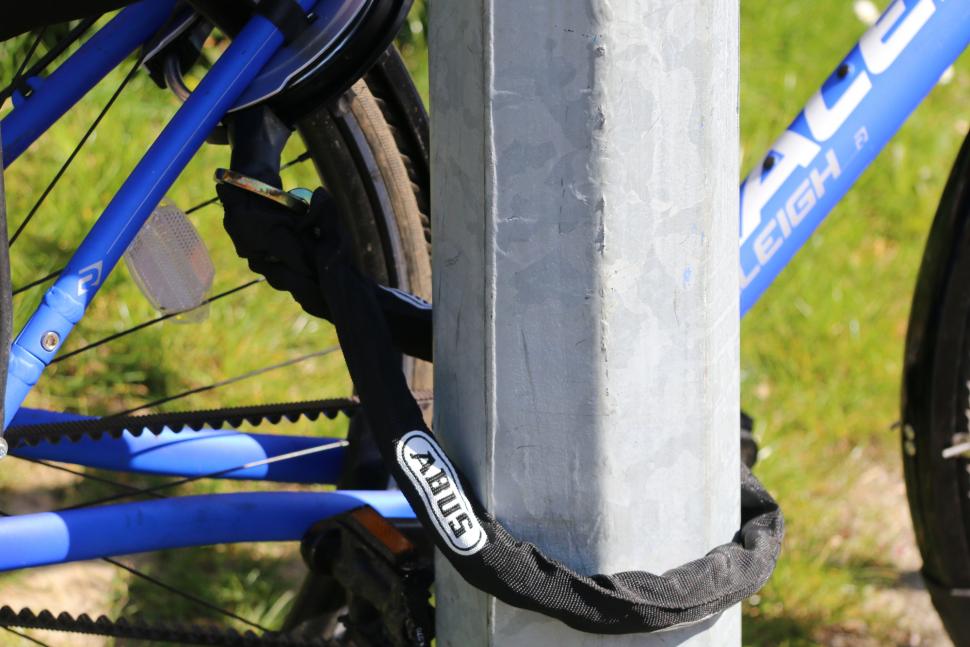
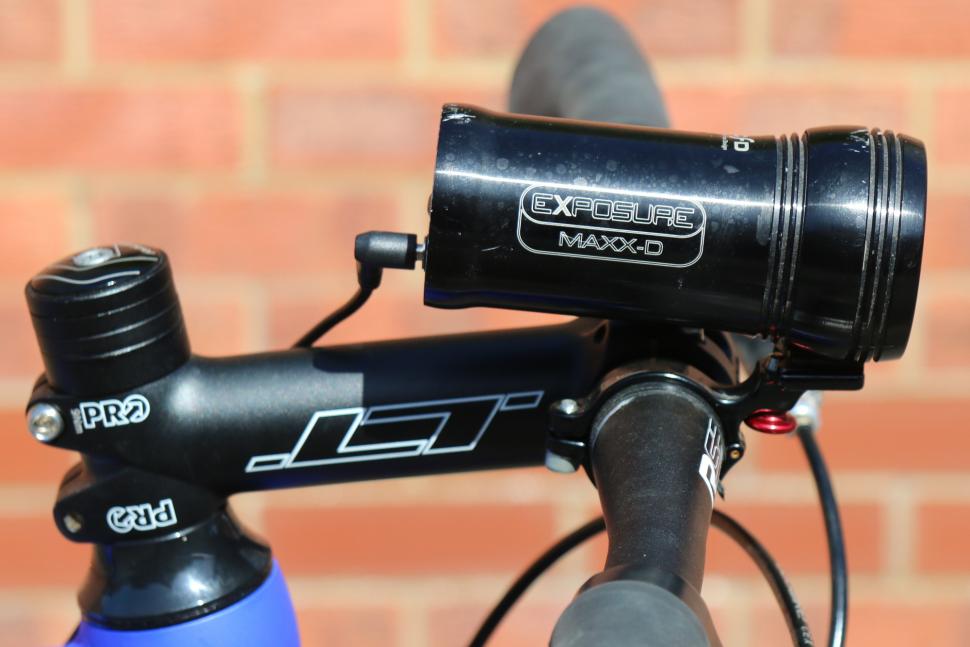
Add new comment
40 comments
If I lived somewhere as flat as the author's Cambridge location (where frame weight isn't so vital a consideration), I would lust after the nearest possible thing to a Secret Service:
http://www.workcycles.com/home-products/handmade-city-bicycles/workcycle...
For slightly undulating terrain, it can feature an 8-speed hub.
Or for more hilarity, a Pastoor fiets http://www.workcycles.com/home-products/handmade-city-bicycles/workcycle... which is the same bike but with a silly frame.
The upright position and that Anglian wind is worrying, though.
I run the wiring through a black plastic 6mm sleeve & zip-tie it to unexposed bits of the frame and rack. No problems here after 5+ years / 20,000+ KM.
A wonderful and useful project. I do feel however that you have failed to restrain your cycle geek. A truly practical, fit-and-forget, leave-and-return urban bike should not attract attention and should be cheap enough to replace if it does get stolen, so I can't see the belt drive, superb as it no doubt is, as truly practical. The horseshoe wheel lock is a great idea though for quick shopping stops. A stand would also be useful.
As for dynamo v battery lights, I'm divided. Dynamo is probably better in the end simply because you can't forget it, don't have to take anything off and lug it around with you, can't be caught out by staying out later than intended. And of course zero cost and maintenance once bought. The downside is the wiring can be vulnerable, especially parking in crowded situations.
English three speeder circa 1950?
My "practical" bike on its holiday in France last year. Punctures with the Alfine hub can be a pain but a can of tyre foam normally gets you back on the road in a few minutes. Aligning the discs brakes after a wheel removal can be done by slackening the mounting bolts for the brakes pulling hard on the brake levers and tightening the mounting bolts again. The hydraulic cylinders line the brake up equally on either side of the disks
Pompetamine Alfine (1 of 1).JPG
I have added an Alfine 8 Speed Hub, panniers and mudguards to my Trek First District that came with a Gates belt drive and it makes a great commuter bike. An Exposure dynamo hub with front and rear lights has been fitted today to make it usable all year.
Trek 1st District.jpg
Still toying with the dynamo idea. Is a hub generator necessary as bottle type means I can keep my old but still decent hope disc hubs
Bottle types work, but nowhere near as well as a hub dynamo. If you do get a bottle, get a Nordlicht one, as they're pretty indestructible and run well.
My daily commuter is a Cannondale Bad Boy 1 with a Shimano Alfine Di2 11 speed IGH drivetrain and XTR disc brakes. Also run Schwalbe Marathon Plus tyres. Absolutely minimal maintenance, don't ever need to fiddle with cables. Just lube and clean chain once a week or so. IGH oil may need to be replaced at some stage but I'm not there yet (simple procedure). I've pulled 5mm nails out of the tyres without any punctures.
Overkill perhaps, but I freely admit to being a gadget/gear freak and I love riding this bike to work!
@L.Willo
Not really interested in replacing my bike, but its nice to make bike dreams
I cannot see accurately the existence of fender mounts, but the lack of them would be a dealbreaker indeed.
@cyclisto, the absence of mudguards and a quality rack is more problematic for me than the lack of drop bars, especially at that price, but otherwise it looks like a really well sorted machine. If I can get it for 15 - 20% off in the sales, it's a deal.
Would it be cheaper for you to buy from the UK seeing as the exchange rate is better for euro shoppers because of fears around Brexit?
My biggest concern is that it looks so damned good in the flesh! A total thief magnet.
@L.Willo
I wasn't aware of this cool bike. I love the paintjob and the smooth welds, the tires are a bit of an overkill at 42c but they can be replaced. The price I find it at bike24 (1500euro) is a bit steep, but apart from drop bars, everything that a commuter needs is right there. If it was sold at this price with drop bars it would be a great temptation!
Well there is actually a cable STi shifter for Shimano hubs but it is not a Shimano product http://www.sussex.com.tw/versa.html . But even if works good with the hub, it will not work with hydraulic brakes and since we are speaking about dream bike, hydraulic brakes would be more than welcome. I am Shimano fan but I cannot understand why they have gaps in hydraulic road brakes such as in 9speed brifters or hub gear brifters. I hope they will make them soon...
My dream commuter bicycle would be belt-driven with internal 11speed hub, hydraulic brakes equiped road bicycle, that can clear a 32c tire with fender and a geometry that resembles more like a touring bike rather than a racing bike. May it be steel or aluminium, and if it was made from titanium it would simply be something to drool over. No carbonfibre lover for commuting here, even about fork only. I don't care about the label, as long as the price is sensible, Pinnacle and Plannet X would be perfect!
Unfortunately, I think there are no brifters for hub gears AND hydraulic brakes as we speak.
Sounds like a Cube Editor would be a good place to start a customisation project. Am keeping my eye out for one in the clearance sales.
http://www.cube.eu/uk/products/trekking/editor/cube-editor-black-flashgr...
Only problem is for combined road brake shifters you need Alfine Di2 which isnt cheap ...
http://bike.shimano.com/content/sac-bike/en/home/components11/city---com...
http://bike.shimano.com/content/sac-bike/en/home/road/shifting---braking...
As to tyres: no need to go to the heavy and sluggish standard Marathons. The Marathon Supreme is a folder, much lighter and better-handling, almost as puncture-resistant, and available in a variety of sizes for 700c and 26-inch. The now-obsolete mark 1 model is being sold through at very keen prices. A utility bike can still have enjoyable handling!
I did something similar 6 years ago - converted my Pompino by cold setting the rear triangle so I could fit an 8-speed Alfine hub and added Versa shifters, a dynamo front hub with disc brake, rack and full mudguards. It is heavy, and having a full length gear cable housing cable-tied to the frame because there are no cable stops causes the shifting to go out of index very often. I was intending to commute 30 miles each way on it frequently but I've tended to use a different bike because of the weight and the shifting. It works very well as an everyday bike for popping to the shops or riding to the station though.
I basically had the same set-up with a Pompetamine frame. Yes, it made for a heavy bike but I still enjoyed riding it. My main issue was the faff when you got a rear wheel puncture. I found it hard to get the wheel back in, get the chain tension right and the disk rotors aligned on the side of the road. I went for heavy-duty tyres but this just made the bike even more sluggish. I've since rebuilt the setup onto a Kaffenback, which solves the rear wheel alignment as it is a vertical dropout. I managed to get the chain tension right with a half-link but I have an eccentric BB to fit (yes such a thing exists for standard english 68mmx24) when the chain stretches a bit. But I've not bothered with rack and mudguards and just use this bike for fun on trails and sustrans routes when the sun is out.
I cannot say the full length cables on my previous (Pompetamine) bike seemed to affect the indexing though. It also helps keep the muck out (I have an 11 speed Alfine and Versa shifters but I don't see how this would make any difference).
I do use a dynamo hub and lights on my proper commuter in the winter and definitely think they would complement this build. Perhaps a pump seatpost (such as the Dahon one) and basic tools would be a good idea too? Oh and my gold chain cost £6 and it shouldn't get so mucky to be a problem if you keep your bike clean! Some trouser clips are also a rather inexpensive solution if you cannot manage this.
Kaffenback 2 Alfine.JPG
I would imagine the benefit of a belt drive would be the lack of maintenance, rather than the cost or longevity? also, no wear on the chainring or rear sprocket.
"doesn’t have spiky bits that’ll eat your trousers, so you don’t need a chainguard"
I challenge this - if you have flapping trouser cuffs, or a skirt, what's to stop it getting caught? And belt drives like this are still exposed to *everything* the wheels throw up. They will get mucky.
Also, what does one of these belts cost? Seems to be about £50. You can buy a lot more than 3 chains for £50. For lower spec ones, I'd say 6-7 at least, more for a 1/8th bog standard singlespeed chain. That's 30,000km+ of utility cycling, minimum.
I'm not against belts per se, rather that the justifications in the article don't quite seem to...er...justify themselves
Sounds about right - the quietness sounds good. I bet the belt is less noisy over cobbles.
One good addition to a rack is an elastic cord - lets you add a loaf of bread without preplanning. I borrowed a pal's shopper bike. The front basket was sooo useful. And you can see your stuff whle you pedal. I just can't quite bite the bullet to put a basket on my own bikes!
A couple of years ago, care of a special offer on Wiggle, I managed to get a Avanti NIC2 which comes with a Alfine 8+Gates Belt drive and I bought it because for years I had wanted a as zero as possible maintenance commuter bike that I could always rely on.
The only changes I have had to make are replacing the cable disc calipers with some Shimano SLX's I had around and then replacing the front wheel with a dynamo wheel+B&M lights+SKS Longboard Mudguards and then fitting some of Schwalbes supper cushy Land Cruiser tyres to cope with all the potholes that get worse each day.
Two years later, just as I had hoped, its been a zero maintenance ride and a joy to own. Keeping the drive train clean, which used to be a chore of constant chain cleaning and regular replacement... reduced to a few seconds wipe down with a damp sponge and nothing more. The belt still looks like new. The chainring and sprocket have only surface burnishing and nothing like the amount of scouring and damage I had experienced previously... oh and did I mention the most wonderful feature of all and one that I hadn't actually considered before making the purchase decision - it is the most silent bike I own.
If you have a good chain guard then the chain will essentially last forever since it doesn't get wet or mucky. The lubricant stays on it and does its job and unlike the belt drive there really isn't any chance of getting your trousers trapped or mucky.
The belt drive is a solution looking for a problem, and one that it fails to solve convincingly, but then this is a bike-geek's version of a practical real world bike!
The best mudguards have a rolled edge whech creates a water channel round the edges which controls the water better to prevent splashes which as far as i know SKS simply don't offer.
That's one tiny pannier. Or possibly an enormous bike.
Ah. Just spotted the lock reference.
Have since found a few on ebay that look promising. It does seem that while we are at the forefront of competitive cycling in the world we lag behind in the bike as a everyday vehicle.
Yep. For mostly urban riding you don't need anything fancy light-wise (or hub-wise for that matter). Easy enough to get a brand new wheel, dynohub, and light for under £100 from Germany or Holland. UK prices for the same are a joke. I could have gone down the route of spending £90 on the latest and greatest front light but you only really need those for trail riding at night.
Thanks guys. Seem to be a niche market had a look at websites of big three cycle retailers and hardly anything on there for dynamo lights. One did the generator but no front light which seemed odd.
Niche here but everyday item across the channel (compulsory in Germany for example)
Rose Bikes or eBay are a good source for dyno wheels and lights and it needn't be expensive. The lights are fit and forget and its really liberating not having to charge them on a regular basis. Had them on my commuter bike for this winter and there's no going back now. Bright, don't dazzle oncoming drivers, secure as there is no market for them yet, and one of those things that "just works". Have transformed my winter commute, I can see potholes in town due to beam pattern and extend rides out to the country if I want to. Easy to see far enough ahead to ride at 20mph+
Got my front wheel and light (a battered old Cyo Plus with standlight capacitor) for £45 on eBay, took twenty mins to fit. There are bargains out there, particularly this time of year.
I bought a Ghost Panamao 2 from Chain Reaction which came equipped with a hub dynamo and a rear light which runs off the front. The rear stays illuminated for a time after coming to a stop so these lights are out there.
Got Busch & Muller dynamo lights on my commuting/touring bike and the front has a small battery that keeps it on when you stop (in fact I got the upgrade so it can also output via a USB socket to charge batteries while on tour) while there is a capacitor in the back light that also keeps it running too. The back also works as a pseudo brake light, picking up when you slow down from information from the dynamo & chucking out extra light.
Not cheap, but it means I've always got good lights available on the bike.
In my opinion spending upwards of £200 for a set of lights on a bike that you just want to ride around town is crazy money. LEDs are simple and cheap technology and for £50 you can get a pair of USB rechargable lights that have more than enough firepower to light up the road ahead and are easy to whip on and off while you go to buy a newspaper and more like around £20 for 'be seen' only lights.
Pages